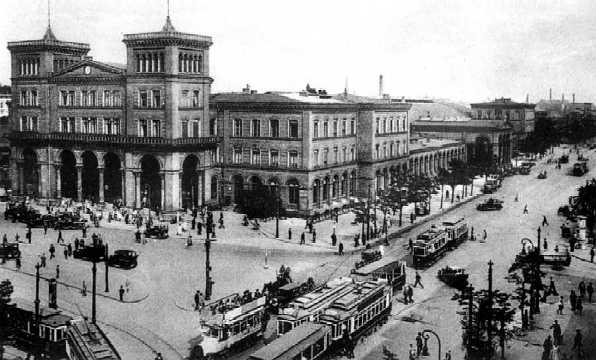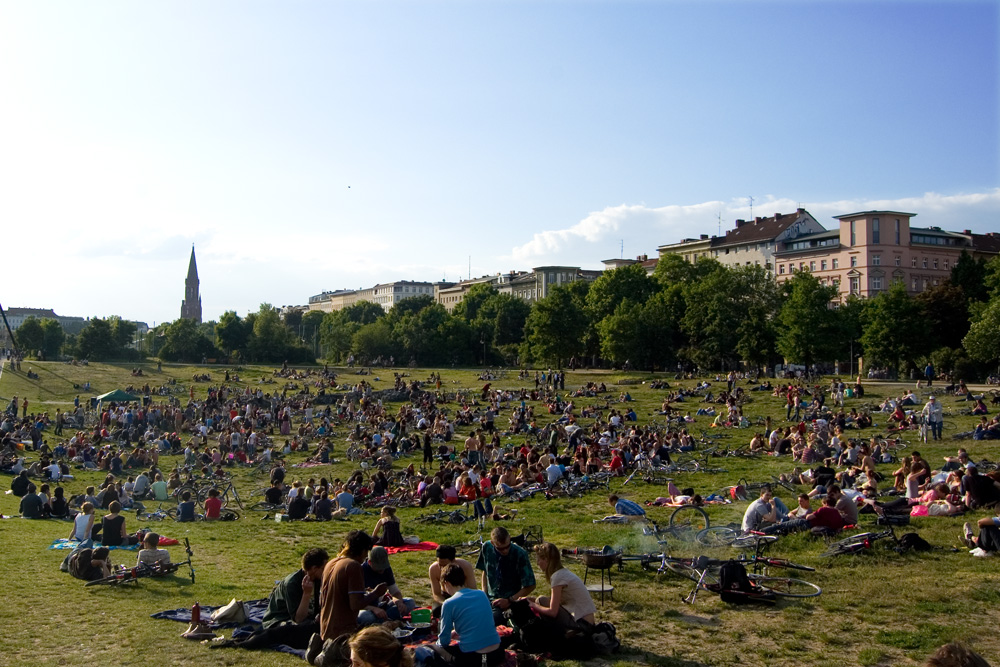

Original rail layout Görlitzer Bahnhof, 1925.
60 years ago, on April 29th, an eastbound passenger train left Berlin towards what today is recognized as Central Europe by many transatlantic visitors. Previously connecting Lower Silesia to the Prussian capital, the train line became outdated by the emerging political landscape of 1951. This was the last passenger train leaving from the war worn terminal. Although freight wagons still carried goods across the border from and to Görlitzer Bahnhof until 1986, it’s busiest times seems to have developed only recently, long after the trains. Mostly on the weekend: they call it park.

Aerial view on the former Görlitzer Bahnhof (1982), from east to west . © Uwe Frank.
As renowed part of Berlin’s informal leisure infrastructure its amenities include Central Europe’s finest blacklight miniature golf course, a petting zoo with real fur, a stone fountain modelled after the travertine terraces at Pamukkale a quarry arena to watch serious barbecue chefs, loose dogs and fellow leisurists, not to mention a team of highly customer-oriented cannabis resellers from east africa (business hours: 10am-10pm). However, few are aware this historic site once hosted the »Stadtpost-Expedition Nr. 36«, whose number would later give identity to generations of nonconformist immigrants.

The Pamukkale fountain was made from Portugese sandstone which couldn't stand the Central European winter and fell appart: the ruin, 2009.

In 2003 PR Kantate’s inquiry of local diminutives turned into an irritating summer hit which some may regard more of an indicator to sales success by the east african team. But it’s 2011, and even Kreuzbergers believe in natural growth and started a fruit tree campaign, leaving no doubt about the site’s eclectic future running off the rails.

Visual roundhouse-kick: the integration of "I love NY" and Apple's logo in one progressive icon.

Hanging out: the basin is not a bomb crater but a left behind deconstruction site. The former underground passage was used by pedestrians to cross underneath the rails. In the 80s it was still passable, but primarily used as a urinal, hence its colloquial name "Pissrinne".
